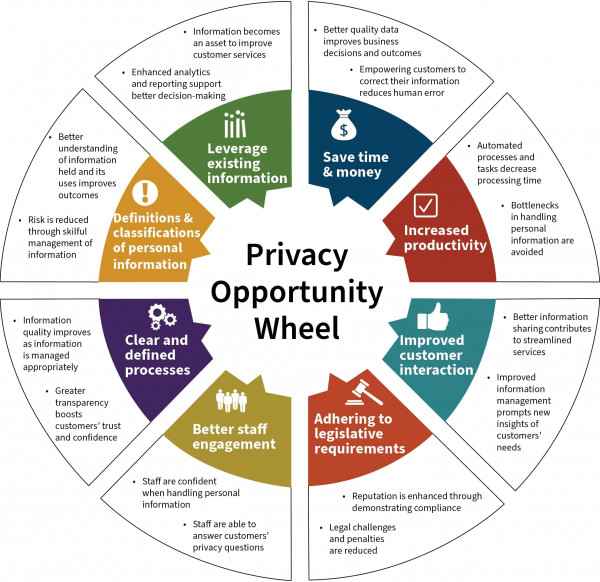Gaining buy-in for a privacy programme
A successful privacy programme needs to have buy-in from decision-makers and stakeholders.
Why buy-in is important
Buy-in from decision-makers and stakeholders will ensure that:
- the privacy programme is allocated appropriate resources
- privacy is embedded within the agency’s culture
- individuals within the agency support the privacy programme and are aware of their role within it.
Resourcing a privacy programme
When making a business case for the resourcing of a privacy programme, it’s important to ensure that the decision-makers understand what’s required to implement and manage a successful privacy programme.
Most of a programme’s resources would generally be allocated across 3 areas:
- people
- process
- technology.
An agency’s privacy team needs to have:
- a sufficient number of staff who are appropriately skilled. The composition of the team will vary depending on the agency’s context, size and risk profile.
- the resources to support the required privacy processes, such as conducting data inventories, risk assessments, and identifying and implementing appropriate controls.
In today’s market, there are numerous privacy technologies that can facilitate the operation of an agency’s privacy programme. Automation, efficiency and consistency are some of the benefits that these technologies can provide.
An agency also needs to invest in its ICT infrastructure to ensure that it remains secure.
Identifying decision-makers and stakeholders
Identifying decision-makers and communicating the importance of an effective privacy programme is an important part of managing a privacy programme. Getting buy-in from an agency’s senior leaders is vital for obtaining the resources required to manage the privacy programme and embedding privacy within the agency’s culture.
A privacy programme also requires support from a range of teams within the agency, including, among others:
- ICT
- Information management
- Legal
- Communications
- Information security
- Policy
- Human resources
- Learning and development
- Risk and assurance
- Procurement
- Health and safety
- Finance.
Communicating the benefits
An effective privacy programme has a range of benefits that needs to be presented to decision-makers and stakeholders to gain the resources and support required to operate effectively.
Benefits of an effective privacy programme include the following:
Reporting the benefits
Using privacy metrics
Once an agency’s privacy programme is underway, use privacy metrics to illustrate the programme’s benefits.
Metrics can facilitate discussions with senior leaders, other business units and stakeholders. Using metrics can also advance the maturity of an agency’s privacy programme and operations. The Privacy Maturity Assessment Framework (PMAF) is an example of using metrics to both communicate with stakeholders and improve an agency’s privacy practices.
Different metrics can be used for different audiences depending on their level of interest, influence and responsibility. One way to communicate the benefits is to develop metrics for different aspects of the information life cycle — collection, storage and security, use, access and correction, disclosure, retention, and disposal — as well as different processes (for example, incidents, training, and risk profile). These metrics can illustrate an agency’s trends over time and lead to a more in-depth conversation about the agency’s privacy programme.
More information:
The Privacy Opportunity Wheel
The Privacy Opportunity Wheel is another way to communicate the benefits of an agency’s privacy programme and how good management of personal information can bring about opportunities and benefits.

Detailed description of diagram
This diagram uses a colour wheel with 8 segments to describe the benefits of an agency’s privacy programme.
- Save time and money — Empowering customers to correct their information reduces human error. Better quality data improves business decisions and outcomes.
- Increased productivity — Automated processes and tasks decrease processing time. Bottlenecks in handling personal information are avoided.
- Improved customer interaction — Better information sharing contributes to streamlined services. Improved information management prompts new insights of customers’ needs.
- Adhering to legislative requirementss — Reputation is enhanced through demonstrating compliance. Legal challenges and penalties are reduced.
- Better staff engagement — Staff are confident when handling personal information. Staff are able to answer customers’ privacy questions.
- Clear and defined processes — Information quality improves as information is managed appropriately. Greater transparency boosts customers’ trust and confidence.
- Definitions and classifications of personal information — Better understanding of information held and its uses improves outcomes. Risk is reduced through skilful management of information.
- Leverage existing information — Information becomes an asset to improve customer services. Enhanced analytics and reporting support better decision-making.
Utility links and page information
Last updated

